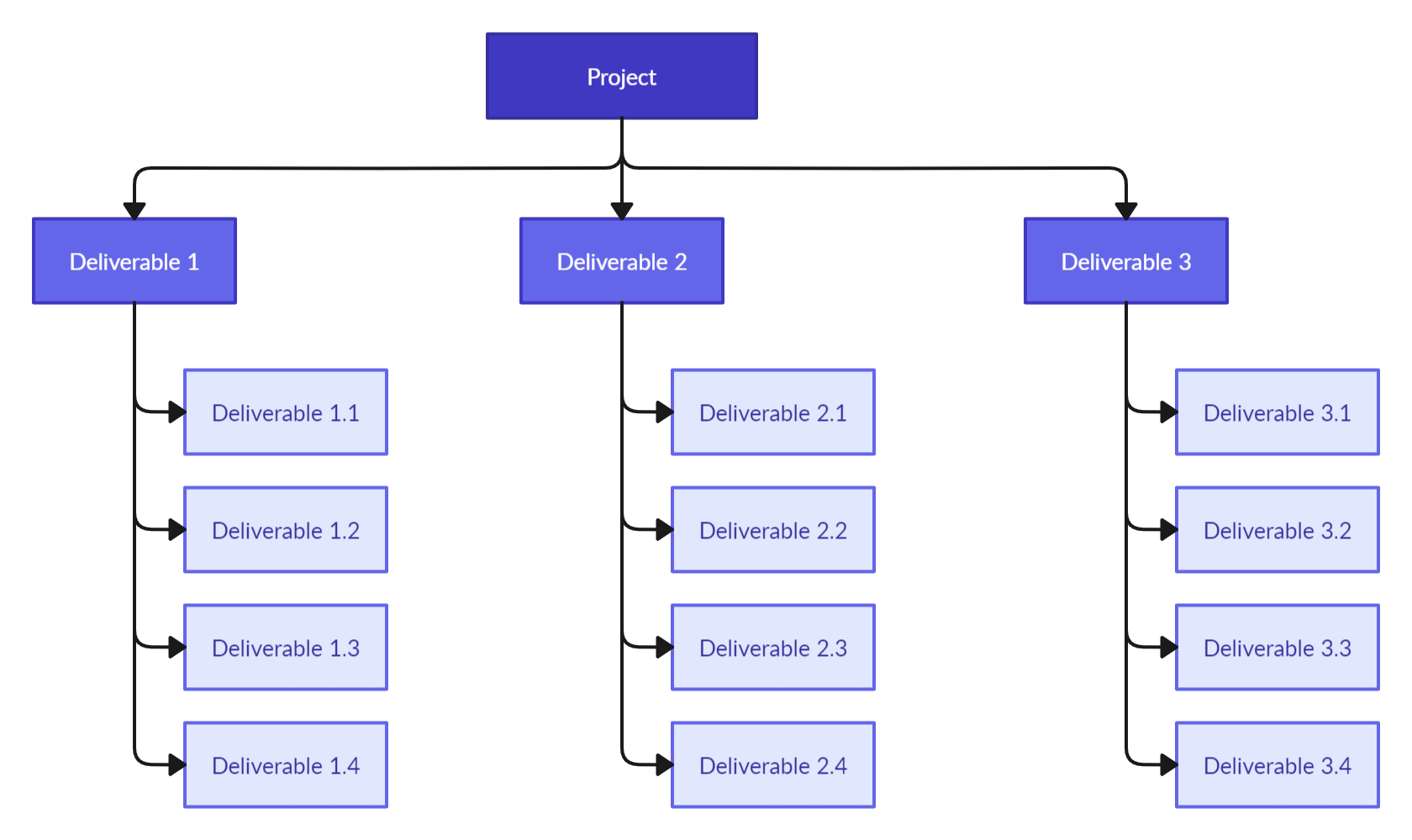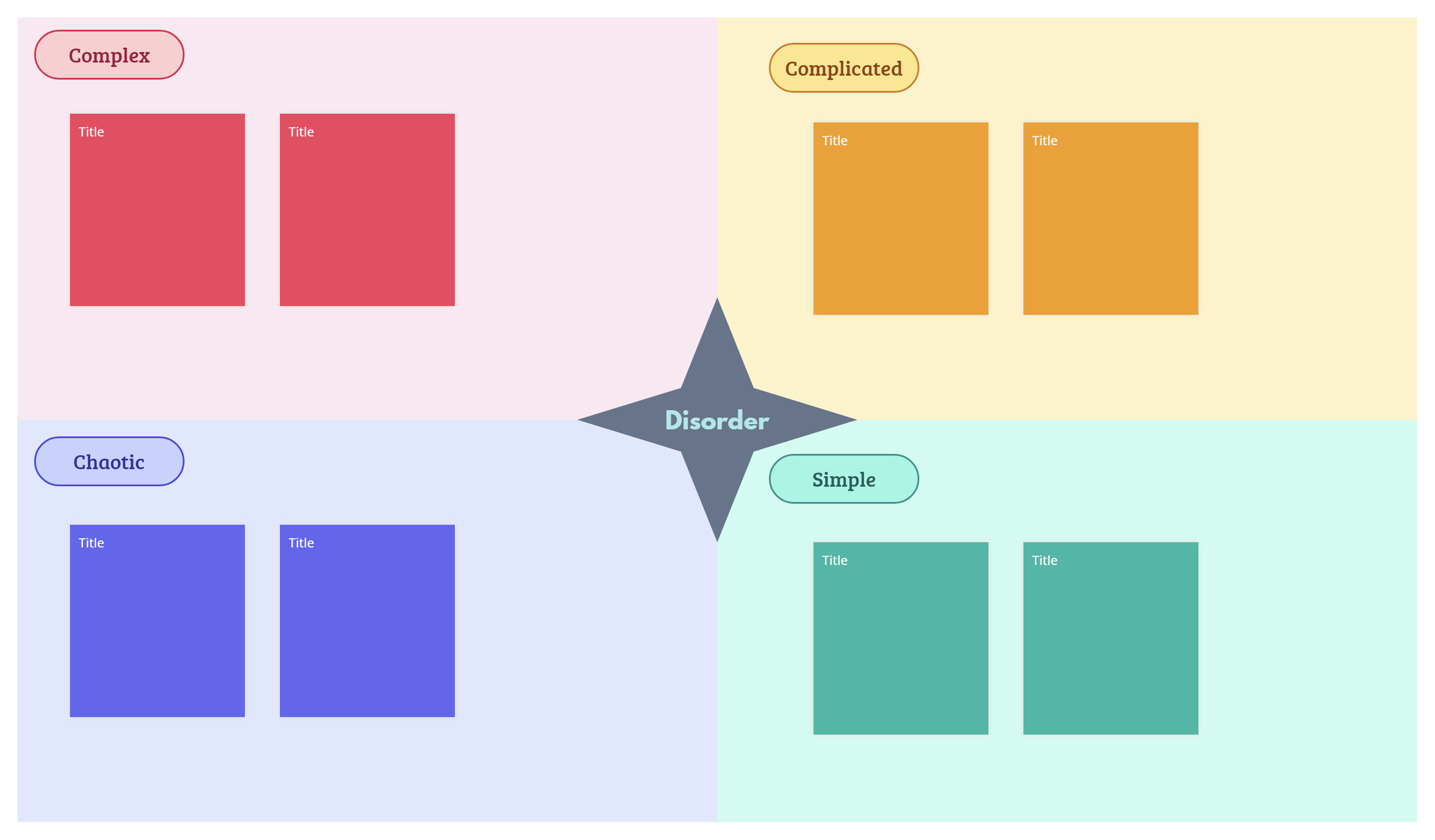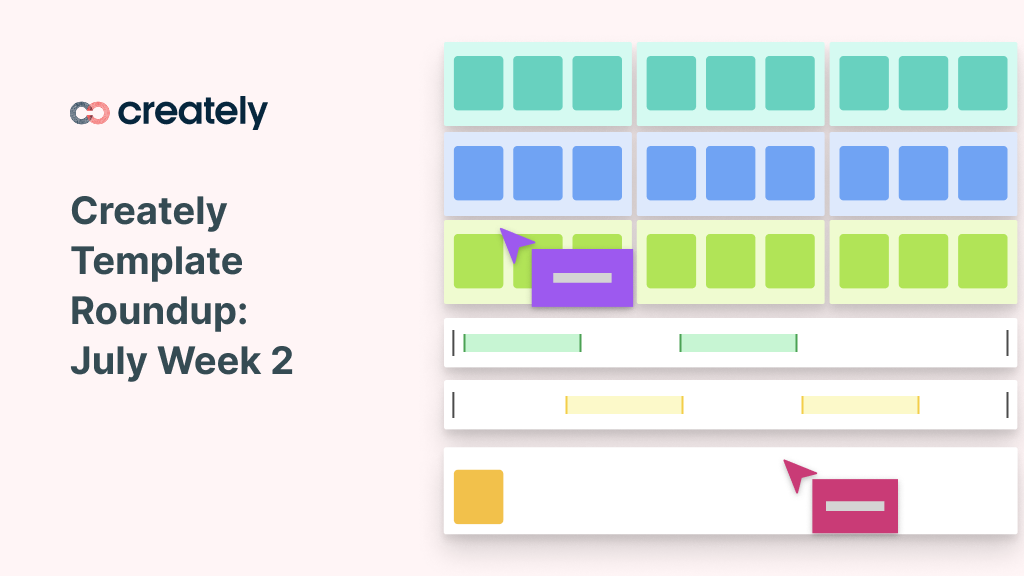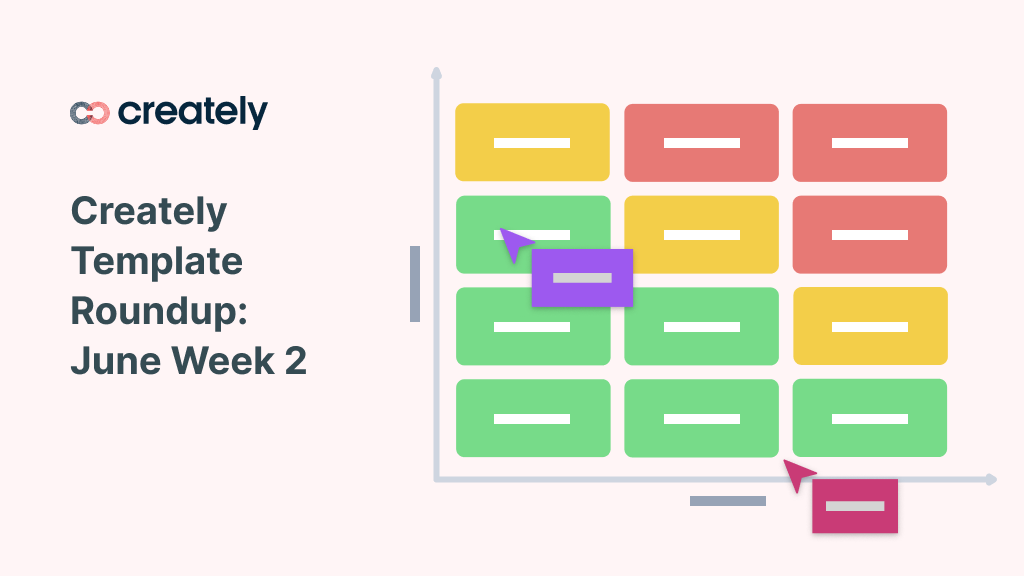In our last week’s roundup post, we shared several templates specifically designed for UX designers, product managers, project managers, and HR professionals.
This week, we have five new templates which are useful for organizing projects effectively. These templates will help project teams with planning, mapping, managing, and executing various tasks.
Explore our diagram community to discover a wide range of industry-specific templates and examples that can assist you in efficiently managing your daily tasks.
This week’s templates include:
- Project proposal template
- Work breakdown structure
- Problem prioritization template
- Cynefin framework
- Timeline workflow template
Project Proposal Template
The project proposal template is designed to streamline project planning and organization. This template provides a structured framework to outline your project’s objectives, scope, resources, and timeline. By utilizing this template, you can effectively communicate project ideas and strategies to stakeholders, ensuring clarity and alignment from the very beginning.
Here’s how to use the project proposal template:
- Introduction: Begin by introducing your project proposal. Clearly state the project’s purpose, goals, and expected outcomes. This section should provide an overview that captures the reader’s attention and highlights the project’s significance.
- Project details: Provide a comprehensive description of the project. Define its scope, key features, and deliverables. Specify the resources required, including personnel, budget, and equipment. This step ensures everyone understands what the project entails.
- Timeline: Outline the project’s timeline from start to finish. Break down the major milestones and their respective deadlines. This helps in visualizing the project’s progression and managing time effectively.
- Methodology: Explain the approach you’ll take to complete the project. Describe the methods, tools, and techniques you’ll employ. This section demonstrates your preparedness and expertise in handling the project’s challenges.
- Conclusion: Sum up your proposal by reiterating the project’s benefits and alignment with strategic goals. Address potential risks and mitigation strategies. Encourage feedback and questions to foster collaboration and refine your proposal.

Click on the image to edit the project proposal template
Work Breakdown Structure
The work breakdown structure (WBS) template assists with effectively organizing complex projects. It breaks down a project into smaller, manageable tasks, allowing professionals to allocate resources, track progress, and ensure efficient project execution.
5 simple steps to use the work breakdown structure:
- Project basics: Start by explaining the project’s main goal and why it matters. Briefly introduce the project’s scope and objectives to give context.
- Main phases: Divide the project into big phases or key parts. These are like the main chapters of your project. List them at the top level.
- Break into tasks: Under each phase, break the work into smaller tasks. These are the specific to-do items that need to get done. Arrange them in a list to show what needs to happen.
- Assign who does what: Say who is responsible for each task. Clearly show who is in charge of each thing. This helps everyone know who does what.
- Time and order: Estimate how long each task might take and if any tasks depend on others. This helps plan the order of tasks and when they should happen.

Click on the image to edit the work breakdown structure
Problem Prioritization Template
The problem prioritization template helps make informed decisions by identifying and ranking problems or challenges. This template enables efficient allocation of resources and focus on the most critical issues, leading to effective project management with innovative elements like the sailboat, Cynefin, problem categorization, and “I like, I wish, I wonder” approaches, this template offers a holistic view of project issues.
5 simple steps to use the problem prioritization template:
- Identify challenges: Start by listing the challenges your project faces. Be comprehensive in noting down the obstacles and issues.
- Sailboat visualization: Use the sailboat graphic to visualize your project’s “winds” (positive forces) and “anchors” (negative factors). This helps you understand what propels your project forward and what holds it back.
- Cynefin framework: Categorize problems into the Cynefin framework’s domains: Simple, Complicated, Complex, and Chaotic. This categorization guides you in choosing suitable strategies for each problem type.
- Problem categorization: Utilize the problem categorization template to sort challenges into different categories based on their nature. This helps you focus on addressing similar challenges together.
- “I Like, I Wish, I Wonder”: Encourage team collaboration by using the “I like, I wish, I wonder” approach. Team members share what they appreciate, what they want to improve, and what questions they have about the project. This fosters open communication and generates insights.

Click on the image to edit the problem prioritization template
Cynefin Framework
The cynefin framework template is a powerful resource for project organization to help with making sense of complex situations. This template categorizes challenges into four domains: Complex, Complicated, Chaotic, and Simple. It offers a structured approach to understanding and addressing various project scenarios.
Here’s how to use the cynefin framework template:
- Recognize the challenge: Identify the challenge or issue you’re dealing with in your project. Understand its characteristics and how it affects your goals.
- Categorize into domains: Place the challenge into one of the Cynefin domains:
- Complex: Problems with no clear cause-and-effect pattern, requiring experimentation and adaptability.
- Complicated: Issues with discernible patterns, needing expertise and analysis for solutions.
- Chaotic: Situations of unpredictability, where quick action is needed to restore stability.
- Simple: Clear cause-and-effect relationships, allowing for standard best practices.
- Domain insights: Learn about the characteristics of the chosen domain. Understand how problems in that domain tend to behave and what approaches tend to work best.
- Choose strategies: Based on the domain, select suitable strategies to address the challenge. Different domains suggest different ways to approach, analyze, and resolve problems.
- Apply and monitor: Implement the chosen strategies to tackle the challenge. Monitor progress and be ready to adapt if the situation changes. If uncertainty arises, reassess the domain and adjust your strategy.

Click on the image to edit the cynefin framework
Timeline Workflow Template
The timeline workflow template is a valuable tool for project organization, as it helps with visualizing and managing project timelines effectively. This template provides a clear roadmap for tasks and milestones, improving project coordination and ensuring timely completion.
5 simple steps to use the timeline workflow template:
- List tasks and milestones: Begin by listing all the tasks and milestones that need to be completed for your project. Make sure to include both major milestones and smaller tasks.
- Arrange in sequence: Organize the tasks and milestones in chronological order. This helps you see the natural flow of the project and how tasks relate to one another.
- Assign durations: Estimate the time required for each task or milestone. This will help you create a realistic timeline for the entire project.
- Visualize the timeline: Use the template to create a visual representation of the timeline. You can use a Gantt chart or a simple chronological list to display the sequence and durations of tasks.
- Monitor and adjust: As the project progresses, regularly update the template to reflect the actual progress. If there are any delays or changes, adjust the timeline accordingly to keep everyone informed.

Click on the image to edit the timeline workflow template





